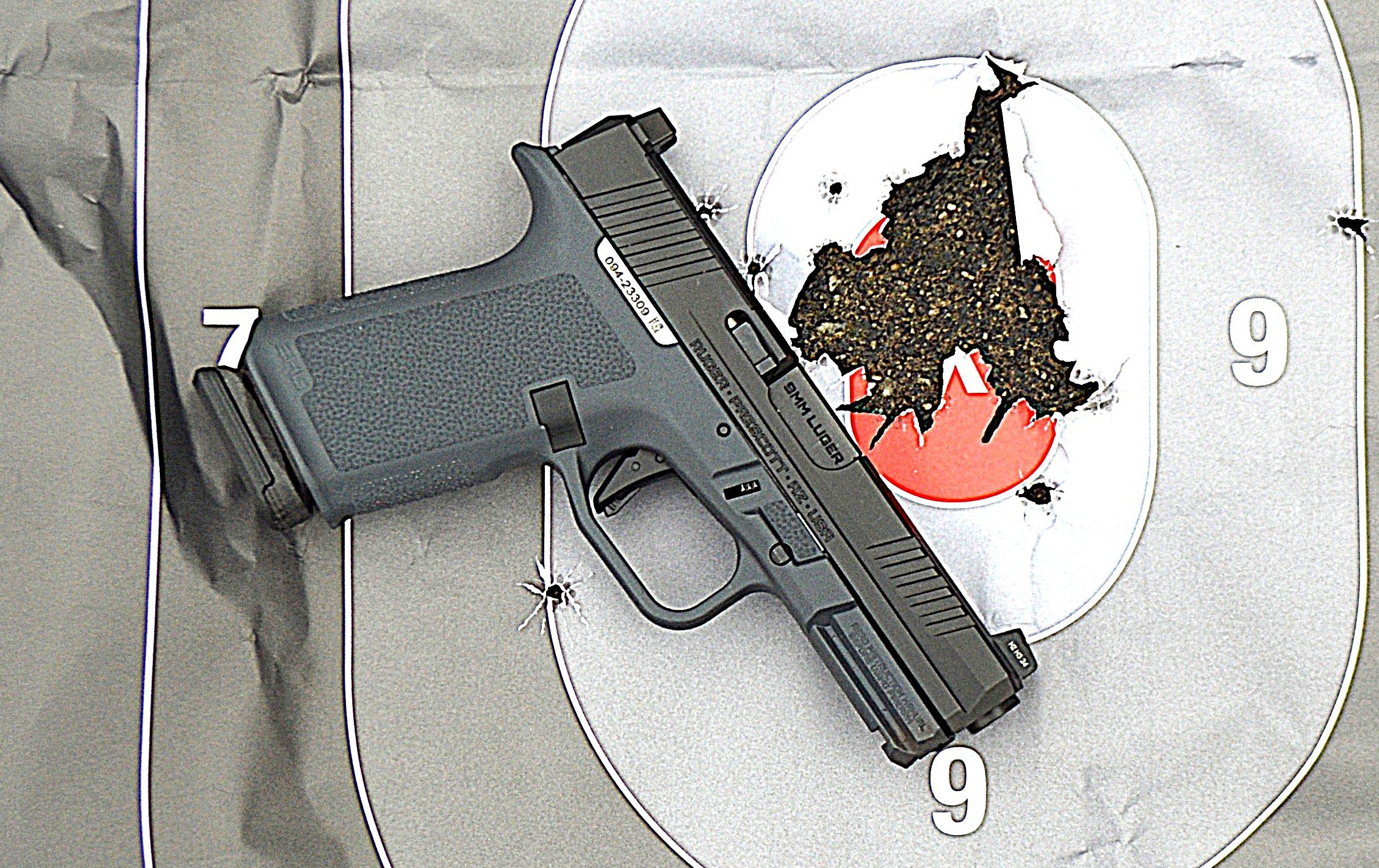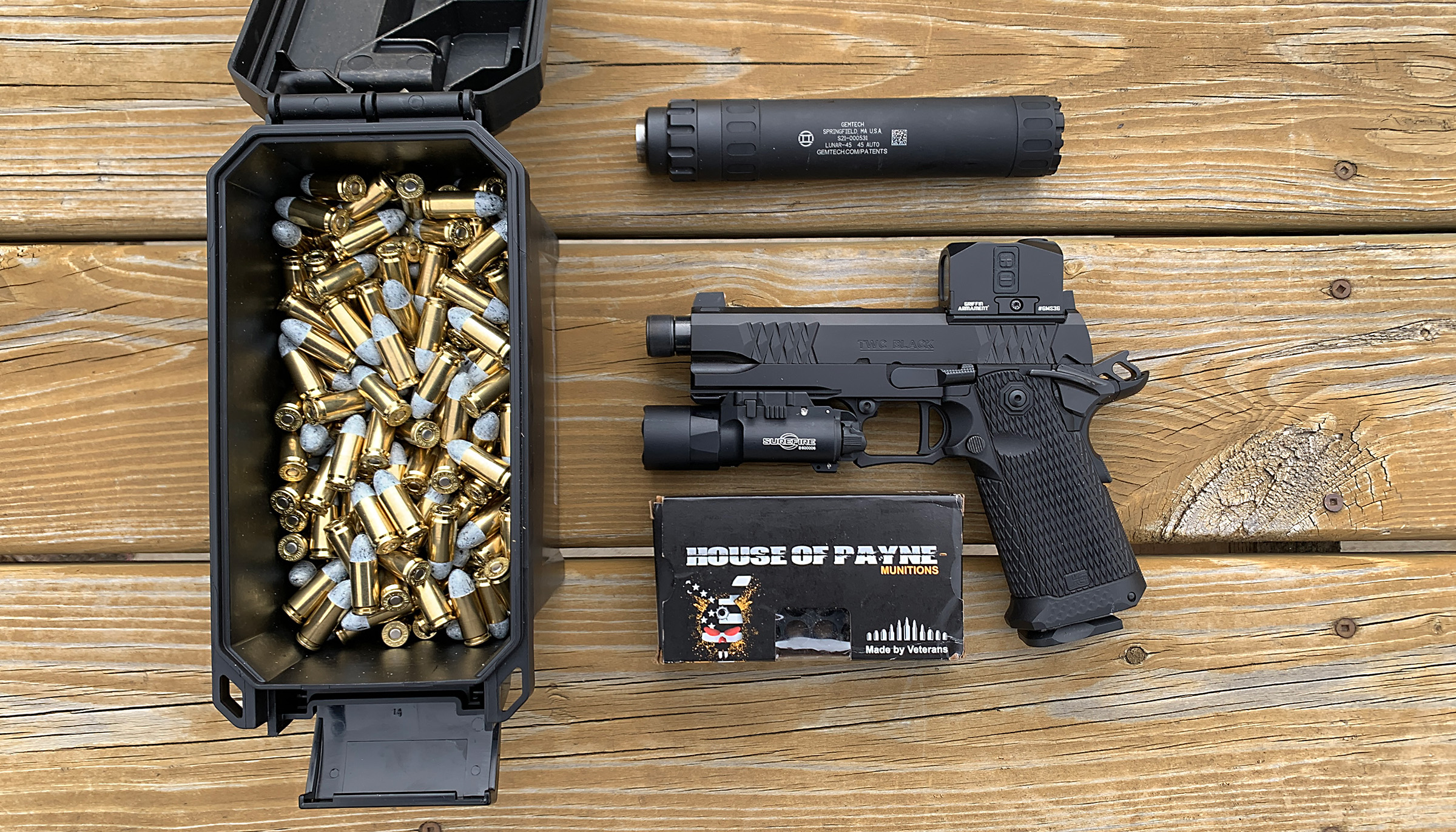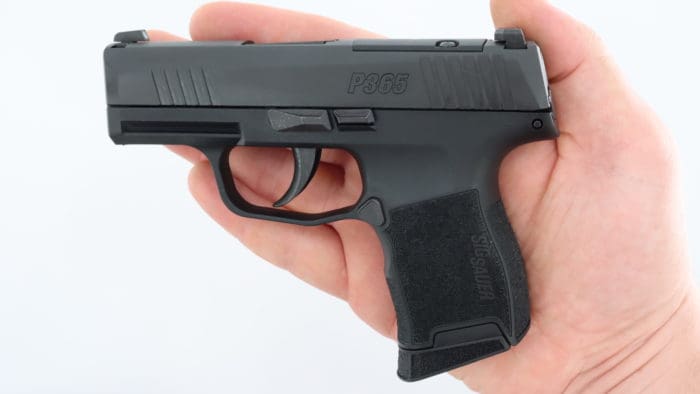Getting a threaded muzzle on a factory rifle saves a lot of time and trouble (and some money) for shooters who want to add a suppressor. Count me in. I like silencers on my handguns, and I’m considering selling a car to fund a silencer purchase for a long gun, so I’ve been shooting bolt-action rifles like the Remington Model 700 SPS-T in 300 AAC Blackout, whose muzzle is factory-cut to accept 5⁄8×24-threaded flash hiders, muzzle brakes, and suppressors.
Announced by Remington in 2012, three SPS-T (Special Purpose Synthetic-Tactical) models have 16.5-inch-long carbon-steel barrels, with the 85549 chambered in .223 Remington, the 84205 in 300 Blackout, and the third in .308 Winchester, No. 85538.
Two other SPS-Tactical models in the line, a 223 Rem. and a .308 Win., have 20-inch barrels (84206 and 84207, respectively) but aren’t threaded for a muzzle device. The shorter SPS-Ts list for $859 MSRP, while the 20-inch-barrel rifles list for $803. So the threads cost $56 in MSRP dollars. I bought my rifle for $680.

Set Up
The Model 700 SPS-Tactical bolt gun has a cylindrical Model 700 receiver design machined from solid steel, with a heavy-contour barrel. The Remington precision rifle didn’t come with bases, so I used Weaver #35/36 bases and Weaver Six Hole Tactical Rings to mount a Nikon M-223 series 3-12x42mm scope.
Installing Weaver bases on the drilled-and-tapped receiver was easy, but I wish Remington had provided an installed 1913 rail with the rifle.
Ammo
My centerfire test ammunition included both supersonic and subsonic rounds, including Remington’s UMC 300 AAC 120-grain OTFB Supersonic L300AAC1, Sellier & Bellot’s 300 AAC 147-grain Full Metal Jacket SB300BLKB, and Remington’s UMC 300 AAC 220-grain Open-Tip Flat Base (OTFB) Subsonic 21422.


Silencer
I fired all the rounds for velocity and accuracy with a Rugged Suppressors Surge 7.62 from SilencerShop.com in Austin ($945). The Surge 7.62 is a modular 30-caliber rifle silencer, which enables the shooter to change the size and configuration of the silencer. It has a removable section of the tube that allows the shooter to go from a full-size 9-inch silencer to a shorter 7.5-inch unit. Depending on configuration, it weighs 17.5 to 21.5 ounces and is made of Stellite with a high-temp Cerakote finish. It comes with a spanner tool to remove the endcap and a user manual.

Also, by adding an interchangeable 5.56 endcap or 7.62 endcap and respective muzzle devices for both calibers, the Surge 7.62 can be assembled as a 9-inch or 7.5-inch 30-caliber silencer rated up to 300 Remington Ultra Mag or as a 9-inch or 7.5-inch 5.56 silencer.

I shot the Surge only in the 9-inch mode and was impressed with the 300 BLK suppression. When paired with 220-grain subsonic rounds, the report is barely noticeable with plugs and muffs on. According to Silencer Shop’s testing, the 9-inch configuration creates 122 dB with subsonic 300 BLK while the 7.5-inch format comes in at 128 dB.
Accuracy Results
The results for the 300 AAC in the Remington was substantially better with one of the rounds. Shooting the Remington 120-grain load, the SPS-T fired 1.4-inch unsuppressed average groups and 1.2-inch suppressed average groups.
Shooting the Sellier & Bellot 300 AAC 147-grain FMJs unsuppressed, the SPS-T shot 1.0-inch groups and a best-of-test 0.75-inch average group size suppressed, with one group as small as 0.4 inches in diameter. I felt I could shoot sub-MOA with it all day.

Shooting unsuppressed, the 220-grain subsonic round from Remington was horrible, averaging 5.0 inches. Suppressed was another matter altogether, with the Remington firing the namesake 220-grain round into 0.8-inch average groups. Average velocities for this round were well below supersonic, with the SPS-T shooting 1075 fps and 1088 fps unsuppressed and suppressed, respectively.
Features
The SPS-T looks odd because it has a stubby 16.5-inch heavy-contour barrel, 0.883 inch diameter at the muzzle. That makes the Remington’s out-of-the-box weight 8.25 pounds but the OAL is just 36.25 inches. A steel thread protector comes installed, and it easily screws on and off with finger pressure.

The rifling rate is marked midway down on the right side of the barrel as “5-R Tactical 1:7 Twist.” The 5-R rifling on the SPS-T is the same type as found on the company’s M24 SWS (Sniper Weapon System) rifle barrel. There are five lands instead of six, as on a traditional barrel. Also, traditional lands are squared off at a 90-degree angle to the groove, while the lands on 5-R rifling are tapered at 110 degrees, which results in less bullet deformation, according to Remington. Also, none of the lands sit directly across from one another. The barrel free-floated in the stock channel.
Rounds fed cleanly out of the hinged steel floorplate internal magazine, and I didn’t experience any binding during reloading. Unloading the magazine took the push of a button, located inside the front of the trigger guard.

Installing the bolt assembly is simple. With the safety mechanism in the “S” position and with an empty rifle, align the lugs on the bolt assembly with the receiver, then slide the bolt assembly into the receiver and push it all the way in.
Removing the bolt is easy on the SPS-T. Raise the bolt handle, pull the bolt handle all the way back, push the bolt stop release in the top of the trigger guard, and slide the bolt assembly out of the firearm.
Trigger
The gun is fitted with Remington’s X-Mark Pro externally adjustable trigger. I liked the trigger, the adjustment screw for which can be reached with the short end of a provided wrench, rather than poking it through a hole in the trigger guard. Remington warns shooters not to adjust the trigger pull force below 3 pounds unless it’s being fired from a secure stationary rest in a controlled environment.
To adjust the trigger, I placed the provided wrench’s hex key in the socket of the adjustment screw located at the top of the trigger. A standard 1⁄16-inch hex key can also be used to make this adjustment. Turning the trigger-pull-adjustment screw counterclockwise lightens the trigger-pull force. Turning the trigger-pull-adjusting screw clockwise increased the trigger pull force by approximately 1 pound for each full turn of the adjustment screw.
After making an adjustment, I used an empty casing to dry-fire the rifle several times to ensure the trigger-pull force spring was re-seated. It is unusual for me to like a factory trigger, but this one was all right. I liked the flat face of the Remington trigger as well.
To check if the trigger would break inadvertently, I inserted a dummy Snap Cap, closed the action, and holding on to the barrel, dropped the gun (no scope) 20 times on the butt from hip height. The gun didn’t release the firing pin with the safety on Safe or Fire.
To engage the thumb safety on the right rear of the action, pull the safety lever fully to the rear towards the ‘S’ position, for Safe. When you are ready to shoot, push the safety mechanism forward toward the ‘F’ position to disengage the safety mechanism, making it ready to Fire.
Stock
The barreled action sits in a Hogue OverMolded Ghillie Green pillar-bedded, synthetic stock with a semi-beavertail fore-end. I found it to be very well mannered on the shooting bench. The pebbled grip on the the soft-touch textured stock was comfortable, and it offered a positive grip, even in inclement weather.

The stock doesn’t have much drop at the comb or at the heel, and there’s not much pitch either. The gun comes up to the face mid-cheek for most shooters. The rifle’s soft Supercell recoil pad reduced what little push the 300 BLK makes, which is even less with the silencer on. It is no 300 Win Mag, so I immediately became of fan of the 300 Blackout.

The dual-point pillar bedding produces a stable relationship between the action and stock, and as a result, I didn’t see stringing when shooting up to five rounds at a time, and the first-shot cold-barrel zero was good for following rounds, showing no point-of-impact shifts.

The Truth About This Gun
The Remington 700 SPS Tactical 300 Blackout is a fine-shooting firearm suited for medium- to long-range use. If you already have an AR-15 semi-auto lower with a 300 BLK upper on it, this bolt gun would be a solid battery mate to easily shoot 300 Blackout suppressed with no concern for gas settings.
Specifications: Remington Model 700 SPS-T
Caliber: 300 Blackout
Action: Bolt; machined solid steel cylindrical, Model 700 receiver
Bolt: 2 lug; blued steel plunger ejector; 90-degree throw
Overall Length: 36.25 in.
Empty Weight: 8.25 lbs.
Barrel Length/Twist Rate: 16.5 in.; 5-R 1:7 RH
Barrel Finish/Material: Matte-blue tactical-style carbon steel; hammer forged, free floated. Heavy-contour clean barrel without sights.
Barrel Muzzle Diameter: 0.883 in.
Barrel Muzzle Style/Device: 5⁄8”-24 thread; steel thread protector
Stock: Hogue OverMolded, Ghillie Green pillar bedded, front swivel stud accepts bipods
Stock Length of Pull: 13.38 in.
Stock Sling Swivel Attachments: 1 butt, 1 forend
Trigger-Pull Weight: 3 lbs.; X-Mark Pro externally adjustable
Safety: 2-position action-mounted lever
Magazine: 5-round internal; hinged floorplate
Sights: None
Optics Mounting Hardware: Drilled and tapped
Made In: Ilion, NY
MSRP: $803 (about $680 retail)
Ratings (out of five stars):
Aesthetics: * * * *
Good bluing, fit, and finish. Cosmetics aren’t this rifle’s raison d’être, so it’s hard to knock it for its looks.
Reliability: * * * * *
Perfect, as expected from a bolt action rifle.
Customization: * * * *
Go pffft with your can, or bang, your choice. Easy to remove/install the suppressor. My wish list would have preferred that a top Picatinny rail came with it, but there’s no rifle platform with more options than the Remington 700.
Ergonomics: * * * *
The stock had adequate grip surface at the wrist, and it slid straight and true on a front rest. It’s very nose heavy, with or without a can. It does not have perfect balance between the hands. This would be fine to hump about 100 yards to a box blind and then poke it out a window. I wouldn’t want to carry it up and down the draws around Marathon.
Overall: * * * *
This is a heavy rifle, even before adding a can. However, that weight makes shooting the 300 Blackout a treat. Ruger also makes a Ranch Rifle in this chambering, so there are lighter options out there.








